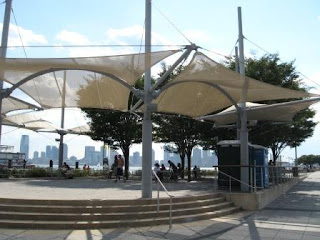On this date fifty years ago, Malcolm X was
assassinated in the Audubon Ballroom.
Today the site of the Audubon, in the Washington Heights neighborhood of
Upper Manhattan, is a laboratory for Columbia-Presbyterian Medical Center. I have ridden by it many times and, in fact,
once went inside the Ballroom. Every
time I passed or visited the site I thought, however briefly, about his
importance, not only to the history of the US and the world, but in my own
life.
I first read Malcolm’s autobiography when I was
about twenty. It was around the same
time I discovered African-American writers like Ralph Ellison, James Baldwin,
Richard Wright and Zora Neale Hurston—and when I first heard Bob Marley. In one way or another, they all not only
expressed the burning desire to be free, but also made oppression—which is to
say, the things that turn people into slaves of all kinds—clear and vivid.
I identified with their wishes and feelings for,
as it turned out, reasons very different from theirs. How could mine not be different? After all, as difficult as my grandparents’
lives were, nobody brought them here in chains.
Even more to the point, I knew who my grandparents and their grandparents
were, even though I had never met the latter.
So, even though I knew that so much of what I learned in school was a
whitewashed (Yes, I am conscious of that word choice!) version of the truth, I
wasn’t—couldn’t be—conscious of it in the profound way that Malcolm and all of
those black writers and artists were.
So, in my own clumsy way, I reacted to the
injustices that persisted long after Malcolm’s murder and the deaths of the
others I’ve mentioned though their polemics, rhetoric, rhythms, intuition and
sense of irony. What I did not understand
was that they could use those tools or gifts or whatever you want to call them
because they mastered them in ways that exact terrible, terrible costs. (Baldwin has written that any people who has
a language of their own has paid dearly for it.) What I could not understand
was that I was paying my own dues, as it were, but I did not yet understand
what I was paying for. So I borrowed
anger, grief, pain and a very dark kind of humor in my own feeble attempts to
come to terms with why I could not live the kind of life for which I was being trained—or
why anyone should want that kind of life.
So why am I mentioning such things on this
blog? Well, for one thing, being a
cyclist has freed me from a lot of things.
I think of all of the time and money I didn’t have to spend on buying,
fueling, maintaining and parking cars.
That is part of the reason why I have been able to live in New York and
spend time with things I love: I didn’t
have to work in some job or in some business that would have destroyed my
psyche or other people’s lives. Being a
cyclist when it wasn’t fashionable also, I think, has made me less vulnerable
to propaganda and groupthink, if it hasn’t made me a better critical thinker or
more creative person (though I think it’s done the latter for me).
Of course, for me, freedom has meant living as the
person I am. Anyone who cannot live with
integrity and with dignity is a slave or a prisoner or worse. One way I identify with Malcolm is that it
took him as long as he did to truly come into his own, even if he accomplished
a lot else before doing so. His descent
into slavery, as it were, came when, in spite of his academic success and
oratorical skills, his eighth-grade teacher mocked his dream of being a lawyer.
When he, as an inmate in the Charlestown (MA) Penitentiary, became a disciple
of Elijah Muhammad, he found a voice. However, it took him much longer, I think, to
find his voice.
Our voice, if you will, is how we express our
authentic selves in the world. For some,
it is in their careers or vocations. For
others, it is in creative work or performing:
I think of Jimi Hendrix’s guitar as his voice. Others express it through a passion or
relationship. Actually, I think that for
most of us, our “voice” is a combination of the things we do and are. Whatever it is, if it isn’t authentic, we’re
still slaves or prisoners. For me, that
is the real importance of Malcolm X’s life and work.








